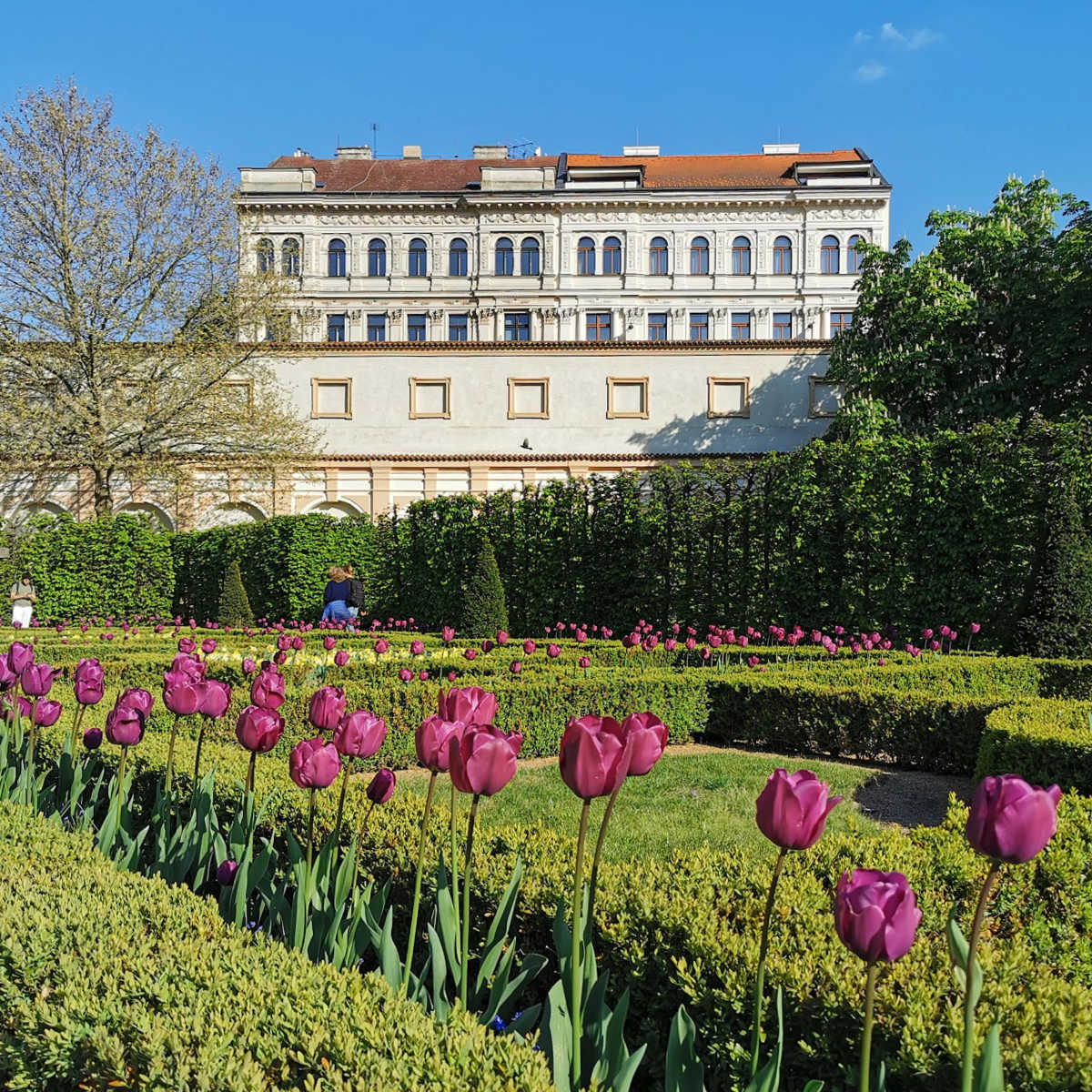Wallenstein Garden
Wallenstein Garden is one of the most visited gardens in Prague, not only because it’s beautiful, but because it’s completely free to enter. This early Baroque garden, part of the Wallenstein Palace complex is so large, that you can hardly believe that it’s in the build up area of Lesser Town.
You can find here elegant fountains, beautifully designed flower beds and peacocks! It’s a great place to stop for a while and I always enjoy visiting the garden in the summer for evening concerts.

My local tip
The Wallenstein Palace, which is part of the garden, hasn’t always been open to visitors, so it’s lovely to see it being open now. It’s now being used by the Czech government for regular meetings and international events. You can visit it every Saturday during the main tourist season. The entry is free and you can look around at your own pace (there is no guide, but the rooms have a brief descriptions in Czech and English).
You can also visit the former Wallenstein Riding Hall, which is now an exhibition space and one of my favourite Art Galleries in Prague. The entrance is from the Malostranska Underground courtyard. The entrance is not free, but the regular paintings exhibitions are always well put together and descriptions are both in Czech and English language.

What you can see in Wallenstein Garden
The garden is divided into several sections with tall hedges, grass and seasonal flowers. There are four fountains, several relief vases, and copies of original sculptures by the Dutch sculptor Adriaen de Vries.
There is also a large pond with fish and an artificial island in the middle with a statue of Hercules. If you are lucky you will see some of the garden’s peacocks, including a white ones!

Perhaps the most intriguing feature of the garden is the artificial dripstone wall with grottoes (caves) which is in the far end of the garden. There is also artificial dripstone cave with owls aviary. If you look carefully you can find hidden faces of people, animals, and other creatures among the dripstones.
If you happen to walk in Letenska street, you can see the back of the grotto, which is completely flat and painted white as a wall, only the uneven top of the wall will give away that it might not be a regular type of wall.
There are also regular outdoor exhibitions, including local history, photos or charity work. Practically every time I visit, there is something different and the notice boards are always in both Czech and English language.

Summer concerts in the garden
The Sala Terrena and the main area of the garden is also used for summer concerts and theatre performances, which are open to the general public for free.
The concerts types varies, but it often includes classical music or performances by local music schools. Either way, it’s always a great way to spend a summer evening, listening to music in such an lovely setting.
The Wallenstein Palace

The Wallenstein Palace itself is a pretty special building as it was the first large palace built in early Baroque style in Prague. It was built between 1624-30 on the site of 26 houses, 6 gardens, 2 brickworks factories, and 1 spare building plot for one of the most powerful and wealthiest Czech noblemen of the post-White Mountain period, Albrecht Václav Eusebius Wallenstein.
By building this large residence, Wallenstein wanted to compete directly with Prague Castle above and show everyone how powerful he was. He acquired his enormous wealth by purchasing confiscated property from rebellious Czech noble men, which after 1620 (the battle of White Mountain) were taken first by the king and then sold of cheaply to his favourite people, such as Wallenstein.
The palace (now used as a government building) has five courtyards with two-story palace buildings and single-story administrative and economic buildings, surrounded by the palace garden to the south and the riding hall to the east (now the Prague Art Gallery). Unfortunately, no plans or records with the name of the designer have survived, but the majority of the work is attributed to the Italian designer Andrea Spezza and Niccolo Sebregondi.

Facilities
There are public toilets (payable) close to the grotto in the corner of the gardens. There are no refreshments or cafes at the garden.
Practical Information
- Location: Valdštejnské Náměstí 4, Prague 1, Lesser Town
- Opening Times: April to October: 7:30 AM to 6:00 PM ( winter season – November to March: Closed)
- Tickets: Free
How to get to the Wallenstein Garden from the centre of Prague
The garden is fairly close to the centre of Prague and on the same way to get to Prague Castle if you are walking from the Malostranska Underground Station.
Metro: Take Line A (Green Line) from Můstek or Staroměstská station to Malostranská station.
Tram: Alternatively, you can take tram lines 12, 15, 20, or 22 and get off at Malostranská tram stop. The tram stop is also conveniently located near the entrance to the Wallenstein Garden.
The garden has several entrances, but the closest one from the underground and the tram is directly ahead of you as you get off tram through a little gate. There is another entrance at Letenska Street, which is the one that has trams running through it (originally that was the only entrance for years, until recently the new more direct entrance was open at Malostranska Underground).
This blog post was originally written on 30 April 2025 and last updated on 30 April 2025






